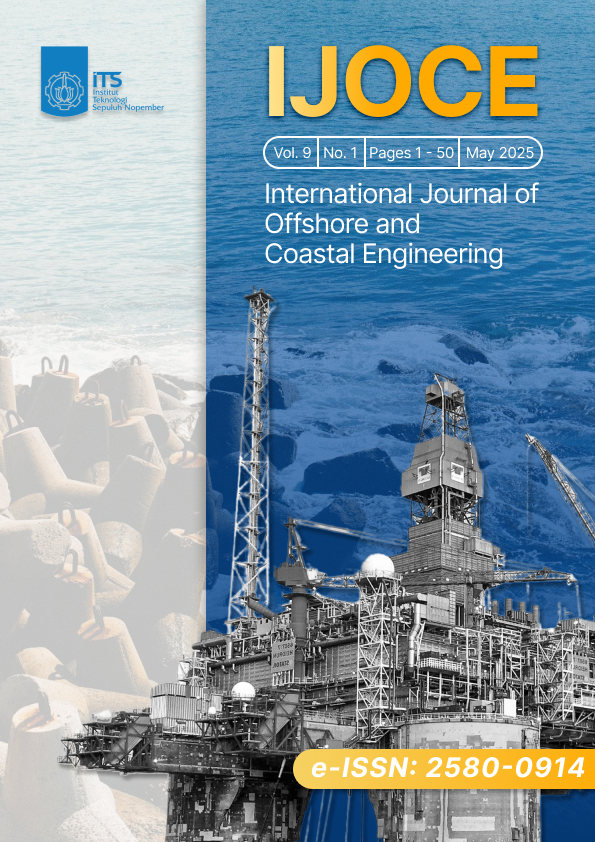Replace Experimental and Numerical Study on Ocean Current Turbine Performance with Innovative Idea Using Toroidal Propeller
Keywords:
Renewable Energy, Current Turbine, Toroidal Propeller, Experimental Study, Numerical StudyAbstract
According to the HEESI, the share of renewable energy production
is only 13.29% of the total energy production, with a target of 23%
by 2025. One promising renewable energy source with a potential
of 41 GW is ocean currents. To harness this potential, propeller
turbines can be used. Propellers are a critical component of these
turbines, typically designed based on the Wageningen B series.
However, this series still exhibits issues such as cavitation and
noise during operation. Toroidal propellers offer advantages by
eliminating tip vortices, resulting in quieter operation, and
reduced fatigue. This study aims to enhance the efficiency of
propeller turbines through modifications using toroidal propellers.
The study employs ANSYS Fluent for simulation and experiments.
The process includes designing toroidal propellers with a
maximum diameter of 3 meters, blade pitch angles of 60°, and
blade counts ranging from 3 to 9. These designs are then simulated
to analyze power and efficiency. Performance testing will measure
RPM, and observe cavitation. The results are for blades ranging
from 3 to 9 generates 42.6 to 63.2 kW. Therefore the best design is
9 blades that generate 63.7 kW of power with a maximum RPM of
89.9.
Downloads
Published
How to Cite
Issue
Section
License
Copyright (c) 2025 International Journal of Offshore and Coastal Engineering (IJOCE)

This work is licensed under a Creative Commons Attribution 4.0 International License.






